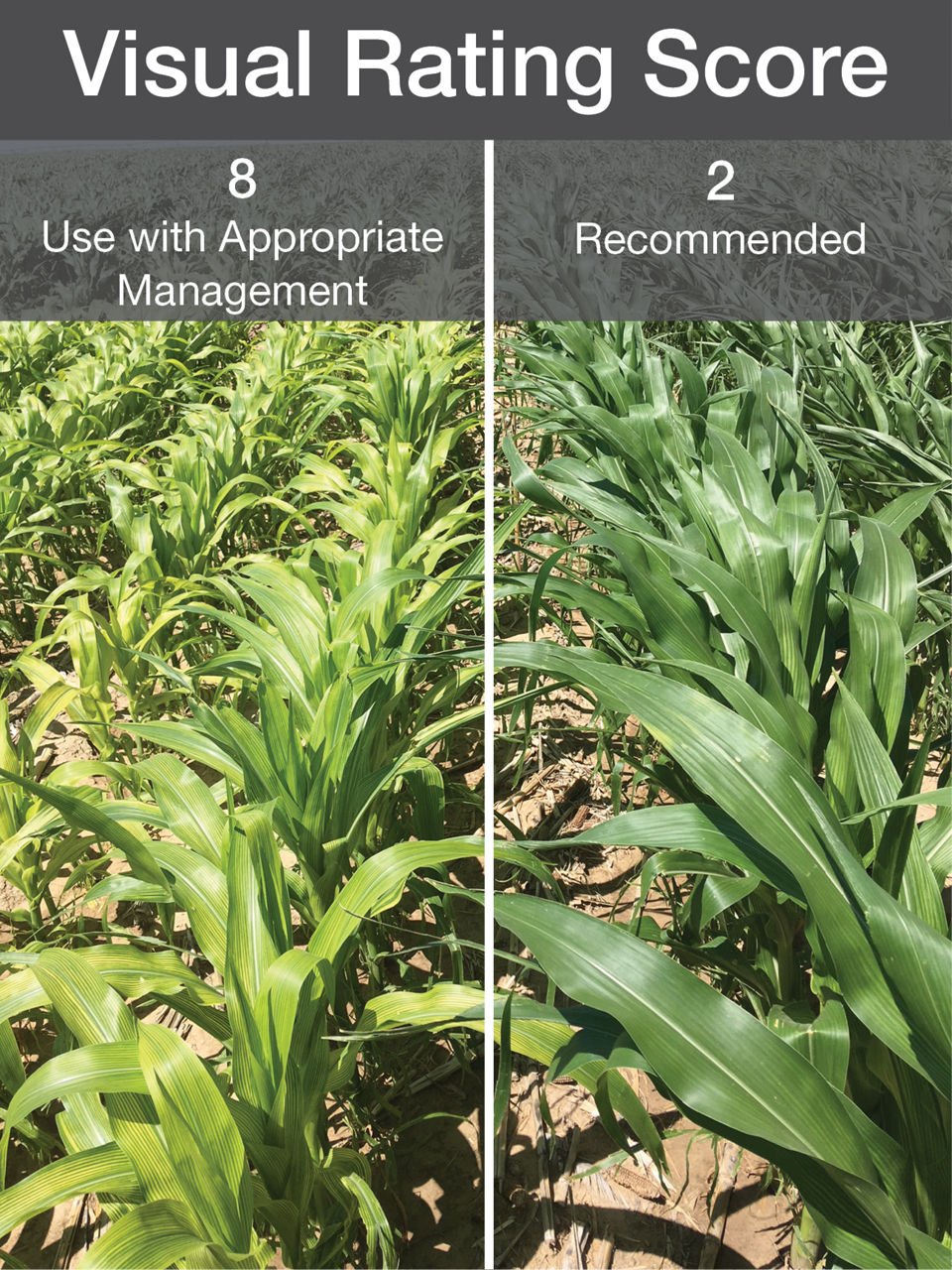20 MIN READ
DEKALB® Brand Corn Products Response to High pH Soils
February 1, 2024
Click on a tab below to see data collected each year for this study
Trial Objective
Corn products vary in their tolerance to soil pH and can be considered low tolerant, semi-tolerant, or tolerant to the effects of high soil pH (7.6 or higher). Key nutrients, including iron, are tied up and unavailable in high alkaline soils. Products with a low tolerance to soils with a high pH can express iron deficiency chlorosis (IDC) resulting in symptoms such as yellow leaves, interveinal chlorosis, and stunted growth. A better understanding of product performance under varying soil pH conditions is important for positioning products to help maximize yield potential.
In Western Kansas and Eastern Colorado, the source of the high soil pH is excess lime from high calcium carbonate concentrations in the soil parent material resulting from eroded sidehills and cut areas in fields. The objective of this ongoing trial is:
- To determine the visual and yield response of a range of different corn products to high pH (7.6 to 8.5) soils.
Research Site Details

- For this trial, 40 corn products of varying relative maturities (RMs) were planted in one pH block in the field.
- 4 products had RMs ranging from 93-day to 97-day (95 RM group).
- 10 products had RMs ranging from 98-day to 102-day (100 RM group).
- 10 products had RMs ranging from 103-day to 107-day (105 RM group).
- 9 products had RMs ranging from 108-day to 112-day (110 RM group).
- 7 products had RMs ranging from 113-day to 114-day (115 RM group).
- 21 of these products were DEKALB® RIB Complete® brand blend corn products; only the results of the DEKALB® brand products are shown in this report.
- A visual color rating (Figure 1) of the foliage was taken at the V8 and VT growth stages:
- Very dark green = 2
- Pale yellow = 8
- Each product was replicated 4 times.
- Soil pH was determined by grid sampling each trial area at a 1/10th acre density.

Understanding the Results
The corn products in the trial varied for high pH tolerance. Five products were visually rated as above average, highly recommended; ten were rated above average, recommended in most situations; five were rated as average, recommended in some situations; and one was rated below average, not recommended (Table 1).
Table 1. Performance and Visual Ratings for Corn Products Grown in High pH Soil and Neutral pH Soil.

Key Learnings
- High pH soils are typically found in areas with eroded topsoil and topography changes. In those situations, it can be difficult to compare yield potential between neutral and high pH areas of the field. Producers need to keep this in mind while making yield comparisons on their own farm.
- The importance of selecting a product that can tolerate high pH soils varies based on the proportion of high pH soil acres in each field and the range in pH within each field.
- The pH tolerance of any corn product is indicated by a visual color rating. However, color expression can also be influenced by other abiotic factors such as soil temperature, nutrient availability, and nutrient uptake. Producers should assess all potential problems when evaluating product performance under high pH soils and when selecting specific products for their fields.
1217_166707
Seed Brands & Traits
Crop Protection
Disclaimer
Always read and follow pesticide label directions, insect resistance management requirements (where applicable), and grain marketing and all other stewardship practices.
©2024 Bayer Group. All rights reserved.